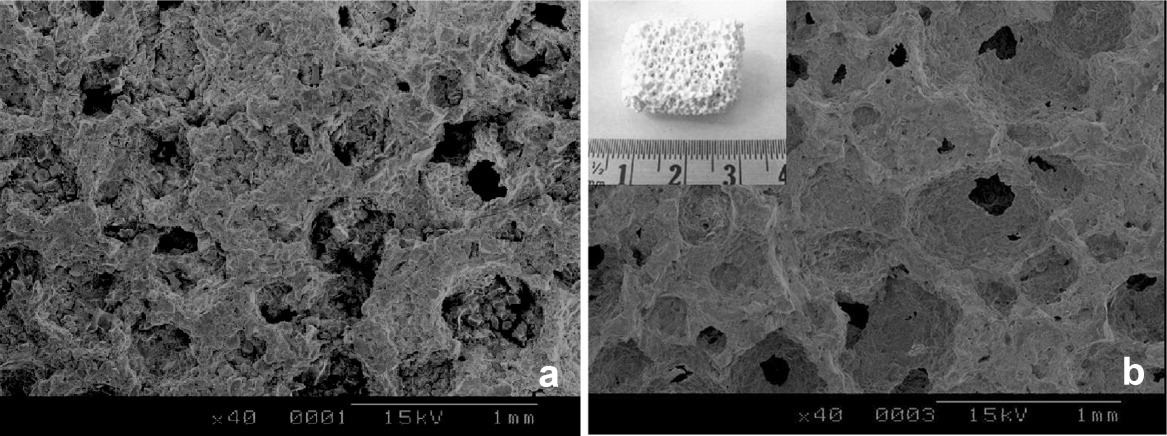Hydroxyapatite (HA) ceramics are widely used as bone graft substitutes because of their biocompatibility and osteoconductivity. However, to enhance the success of therapeutic application, many efforts are undertaken to improve the bioactivity of HA. We have developed a triphasic, silica-containing ceramic-coated hydroxyapatite (HASi) and evaluated its performance as a scaffold for cell-based tissue engineering applications. Human bone marrow stromal cells (hBMSCs) were seeded on both HASi and HA scaffolds and cultured with and without osteogenic supplements for a period of 4 weeks. Cellular responses were determined in vitro in terms of cell adhesion, viability, proliferation, and osteogenic differentiation, where both materials exhibited excellent cytocompatibility. Nevertheless, an enhanced rate of cell proliferation and higher levels of both alkaline phosphatase expression and activity were observed for cells cultured on HASi with osteogenic supplements. These findings indicate that the bioactivity of HA endowed with a silica-containing coating has definitely influenced the cellular activity, projecting HASi as a suitable candidate material for bone regenerative therapy.

Hydroxyapatite (HA) ceramics are widely used as bone graft substitutes because of their biocompatibility and osteoconductivity. However, to enhance the success of therapeutic application, many efforts are undertaken to improve the bioactivity of HA. We have developed a triphasic, silica-containing ceramic-coated hydroxyapatite (HASi) and evaluated its performance as a scaffold for cell-based tissue engineering applications. Human bone marrow stromal cells (hBMSCs) were seeded on both HASi and HA scaffolds and cultured with and without osteogenic supplements for a period of 4 weeks. Cellular responses were determined in vitro in terms of cell adhesion, viability, proliferation, and osteogenic differentiation, where both materials exhibited excellent cytocompatibility. Nevertheless, an enhanced rate of cell proliferation and higher levels of both alkaline phosphatase expression and activity were observed for cells cultured on HASi with osteogenic supplements. These findings indicate that the bioactivity of HA endowed with a silica-containing coating has definitely influenced the cellular activity, projecting HASi as a suitable candidate material for bone regenerative therapy.
